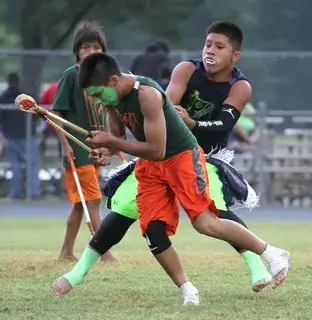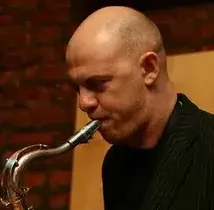In the annals of North American sports, few games carry the cultural weight, history, and indigenous spirit of Stickball. Originating from the Native American tribes, Indigenous North American Stickball is more than just a sport—it’s a symbol, a ritual, and a celebration of heritage.
Chapter 1: The Roots of the Game
Before lacrosse and before football, there was Stickball. Its origins can be traced back over a thousand years to the indigenous tribes of North America, especially the Choctaw, Cherokee, and Creek tribes. Stickball was not merely a recreational activity but a ceremonious event, deeply embedded in tribal traditions and spiritual beliefs.
Chapter 2: Beyond Sport: A Ritualistic Undertone
Stickball was often referred to as the “little brother of war.” Tribes played it to resolve conflicts, to train young warriors, and to entertain during major tribal events. The field became a metaphorical battleground, allowing disputes to be settled without the actual bloodshed of warfare.
Chapter 3: The Tools and the Trade
The key equipment in Stickball is the pair of sticks, traditionally crafted from hickory. The ball, made from a woven leather pouch, is small but has significant weight. The game’s aim is to strike the ball, using the sticks, towards opposing goals, often tree trunks or crafted wooden posts.
Chapter 4: The Rules and the Spirit
The rules varied among tribes, but the game’s spirit remained consistent: teamwork, strategy, and respect for both teammates and opponents. In some versions, hundreds of players could participate, and games might stretch across miles and last for days.
Chapter 5: The Social and Cultural Fabric
For many tribes, Stickball games were social events. They provided a platform for community bonding, for stories to be shared, and for songs and dances that celebrated the game, nature, and the tribe’s ancestral spirits.
Chapter 6: The Role of Women in Stickball
While men predominantly played the game, women played crucial roles in the surrounding rituals. In some tribes, women were the sole scorekeepers, while in others, they engaged in their version of the game, ensuring gender inclusivity in this vital cultural practice.
Chapter 7: The Modern Revival
Post-colonization saw a decline in Stickball as Western sports and influences pervaded indigenous cultures. However, the late 20th century saw a cultural renaissance. Tribes began revitalizing and reintroducing Stickball in community events, schools, and national gatherings.
Chapter 8: Stickball Today
Today, Stickball tournaments are held across North America, celebrating the sport’s rich heritage and introducing it to new generations. These events are not just about competition but about education, ensuring the game’s lore and significance are preserved.
Chapter 9: Challenges and the Way Forward
While the revival is promising, challenges persist. From sourcing traditional materials to navigating land rights for playing fields, the journey to preserve Stickball in its authentic form continues.
Chapter 10: Embracing and Promoting Indigenous Heritage
The tale of Stickball underscores the importance of preserving indigenous traditions. It stands as a testament to the rich history of North America, long before colonization, and reminds us of the depth, wisdom, and beauty of indigenous cultures.
In Conclusion
Indigenous North American Stickball is more than a game—it’s a living, breathing chronicle of a continent’s history. It speaks of times when sports were not just games but essential components of a community’s identity and spiritual fabric. In our rapidly globalizing world, preserving and celebrating such traditions becomes paramount. As we cheer for Stickball players, we’re not just applauding their skills; we’re saluting a culture, a history, and a timeless spirit of unity and resilience.










Leave a Reply